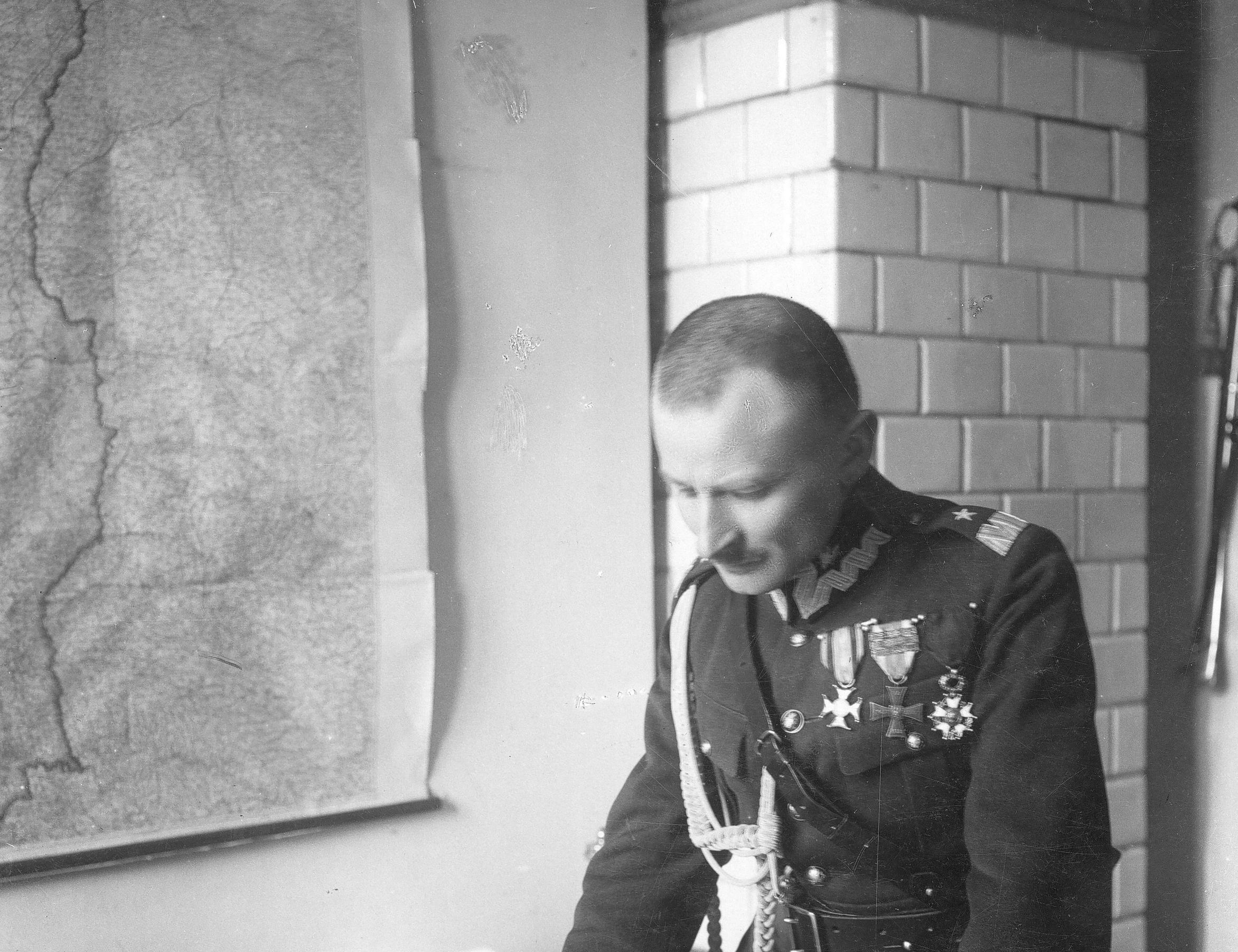Marian Kukiel’s oeuvre is one of the milestones of Polish military historiography. Together with Wacław Tokarz, Marian Kukiel was a co-founder of this discipline. His monumental work on the War of 1812 is an important contribution to European Napoleonic studies. The researcher’s qualities included versatility and diligence. He was a soldier, politician and promoter of scientific life, but it was research work as a ‘choice of the heart’ that engaged him most. This is evidenced by his output of one and a half thousand written pieces.
by Tomasz Siewierski
Askenazy’s disciple
Marian Włodzimierz Kukiel was born in Dąbrowa Tarnowska, in the Austrian-controlled part of partitioned Poland, in 1885. At home, the memory of the lost 19th-century uprisings was vivid – understandably, since Marian was the youngest son of a conspirator from the time of the 1863 Uprising, the Commissioner of the National Government for the Hrubieszów District, Adolf Kukiel. As the student of a middle school in Tarnów, which he attended at the turn of the 19th and 20th centuries, he organised secret self-education clubs. When he enrolled at the Faculty of Humanities of the John Casimir University in Lwów in 1903, he already had clearly defined political inclinations.
Like many young radicals, he was a socialist: two years after commencing his studies, he joined the Organisation of the Radiant Ones and, in 1907, the Revolutionary Faction of the Polish Socialist Party – a group in which readiness to fight for workers’ rights was combined with a distinct insurrectionary feature directed against Russian rule.
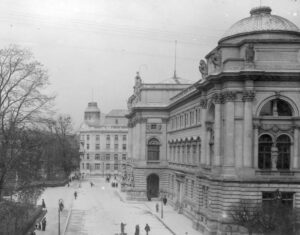
At the University of Lwów, he came into contact with one of the most eminent Polish historians, Szymon Askenazy (1865–1935), Professor at the John Casimir University, and author of a book on Walerian Łukasiński, a martyr for the Polish cause. Prof. Askenazy gathered around him a circle of young researchers, who with time became known as the ‘Askenazy school’. Apart from Kukiel, this group included, as can be seen from the perspective of a century, Włodzimierz Dzwonkowski, Natalia Gąsiorowska Władysław Konopczyński, Henryk Mościcki, and Bronisław Pawłowski.
In 1909, Marian Kukiel defended his doctoral dissertation entitled Denisko’s Expedition. That same year, he published its fragment in Biblioteka Warszawska. Soon, it also appeared in an extended version entitled Insurrection Attempts after the Third Partition of 1795–1797, in a series inspired by Szymon Askenazy. At the time, they did indeed share a master-student relationship, as can be seen from Kukiel’s posthumous memoir published in the leading pre-war monthly Przegląd Współczesny. Kukiel wrote about Askenazy: ‘He devoted to his students long, daily hours of conversation as well as numerous, densely written pages of letters, and this relationship did not end with the completion of their studies. He was inexhaustible in his advice and guidance, he took the most solicitous care of those who worked creatively, sometimes winning them jobs, allowances, or himself providing the most discreet material help in times of need. The notion of the Polish raison d’état ran like a red thread through his lectures, through his conversations with students.’
A historian’s passion for soldiers
One Polish historian wrote of Marian Kukiel that he ‘combined a pen with a sabre’. As mentioned, he involved himself already during his university studies with organisations whose programme and activities referred to independence traditions. In 1908, together with Kazimierz Sosnkowski and Władysław Sikorski, he co-founded the Union of Active Struggle, which was legal in Galicia, and was to support the future uprising against Russia. Marian Kukiel likely created the name of this organisation and formulated its programme. He was also a member of the Riflemen’s Association. In the following years, he graduated from the Riflemen’s Officer School, and was active as a feature writer. Even in those pre-war years, however, he was dominated by his passion for research as a historian. Historical studies by Marian Kukiel were published until the outbreak of the First World War, among others in Biblioteka Warszawska, Kwartalnik Historyczny and Tygodnik Ilustrowany.
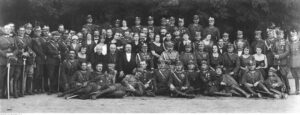
In 1912, a popular, beautifully illustrated work entitled History of the Polish Arms in the Napoleonic Era 1795–1815 was published by Zdzisław Rzepecki and Co. On the eve of the outbreak of the Great War this book played a double role. It was a reliable source of information on the participation of Polish soldiers in the Napoleonic Wars. At the same time, by recalling the experiences of the previous century, it fuelled the patriotic attitude among Poles, and a belief in regaining independence through active combat.
The book proved to be a real revelation. That same year, 1912, its second edition was published. It influenced readers for years. In 2008, the eminent medievalist Jerzy Kłoczowski recalled the circumstances and the book’s impact when, as a teenager, he had read it for the first time: ‘I myself remember well what reading the history of the Polish arms of Napoleonic times meant to me as a young boy – thrown out of the family home by the Germans with my family. and living in the middle of nowhere for several months – how inspiring and guiding it was in the dramatic situation of the country. From 1941, when I found myself in the underground army, until the 1944 Warsaw Rising (Union of Armed Struggle – Home Army), continuing this path by that generation was a matter of course.’
With the outbreak of the First World War, Marian Kukiel, by order of Józef Piłsudski, took up the post of Chief of Staff of the Riflemen’s organisations of the Lwów District. In time, the Riflemen’s Association’s structures were incorporated into the Eastern Legion fighting under Austrian command. Kukiel’s combat trail coincides with the battles of the 1st Infantry Regiment of the Legions: he took part in several battles against the Russians, including the one near Konary in May 1915, where he was lightly wounded. He returned to active combat in February 1916 as Commander of the 6th Battalion of the 1st Legion Brigade, which he commanded in the Battle of Kostiuchnówka (4–6 July 1916). In the final months before Poland regained independence, he was Commander of the Officer Cadet School in Komorowo near Ostrów Mazowiecka. The end of the war found him in the rank of Lieutenant Colonel. He did not neglect his historical research during that time.
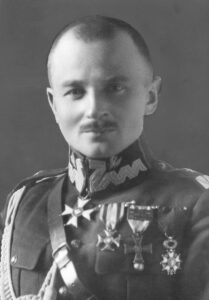
General and director
In the already independent Poland, Marian Kukiel took part in the Polish-Soviet War. The experiences from these events influenced his career and resulted in a number of works. For his contribution to the war, he was awarded the Silver Cross of the Military Order of Virtuti Militari. In the period dating 1920–1923, he directed the work of the Historical Bureau of the General Staff. After two years of service as Commander of the 13th Infantry Division, he became head of the Military Historical Office. At this post, on his initiative (from 1923 in the rank of Brigadier-General), research was conducted into the Polish-Bolshevik war of 1919–1920. During his service in the army of the Second Republic, he also wrote one of his best-known works, namely An Outline of the History of Military Science in Poland. The book was first published in 1921. Subsequently, the author supplemented, changed and improved his work, and published subsequent editions. It is an indispensable compendium used by researchers of military history, described as the ‘bible of the Polish military historian’, reissued until today (the final edition was published in 2006).
However, his article ‘The First Guideline of the Warsaw Operation’ published in Bellona, became the reason for his conflict with Józef Piłsudski – Commander-in-Chief in 1920, who had a fundamental influence on Polish political life in the years of independence. In his article, Marian Kukiel emphasised the role of General Tadeusz Rozwadowski in planning the Warsaw operation. This fitted in (perhaps even contrary to the intentions of the author of the sketch) with the campaign launched by the circles disliking Piłsudski to belittle or negate his merits. No wonder then that, after the May Coup of 1926, which brought Piłsudski and his supporters to power, Kukiel was placed on inactive status, and subsequently decommissioned.
Following the May Coup, Marian Kukiel moved to Cracow. In 1927, he received the title of Doctor Habilitatus at the Jagiellonian University, and became an assistant professor of modern history there. He lectured until the outbreak of the Second World War, from 1935 already a Professor. In 1930, he became the Director of the Princes Czartoryski Museum in Cracow. He held this position until 1939. At the Museum, he combined organisational and scientific work: no wonder, given the fact that the facility had an extremely interesting collection for a historian dealing with modern history, especially from the 18th and 19th centuries. This resulted in his undertaking research on the history of the Czartoryski family.
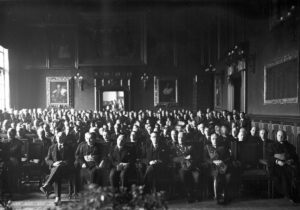
Consequently, Kukiel’s scientific interests also shifted to the 18th and 19th centuries. The main field of the professor’s research became insurrections and Napoleonic times. In 1927, Napoleonic Wars was published (still by the Military Scientific and Publishing Institute), and, two years later, a dissertation on the Battle of Maciejowice. In 1929, another edition of An Outline of the History of Military Science was published and, eight years later, a two-volume work, perhaps the most outstanding in Marian Kukiel’s creative output, The War of 1812.
In the pre-war period, efforts were undertaken to translate it into French. ‘It is safe to say that no European literature can boast a similar work about the Great War,’ wrote Janusz Iwaszkiewicz. However, work on the translation was interrupted by the outbreak of the Second World War and, unfortunately, the initiative was not resumed afterwards. The postulate to publish the work in French and English language versions still appears to be valid.
The War of 1812 belongs to the canon of European historiography. A contemporary Polish historian of historiography wrote about this work: ‘Impressive in erudition, based on awe-inspiring source material – French, Russian, German and Polish – it remains to this day likely the only study of its kind in world literature.’ Kukiel succeeded in filling a very important gap: this is a work that neither Polish nor international (including French) historical science had at that time. The reasons for this were explained by Józef Feldman in his review of the work: ‘The scope of the issue was the deterrent, as it was almost the whole of Europe, the actors – not only monarchs and leaders – but whole nations.’

A historian outside the country
At the outbreak of the Second World War, Marian Kukiel volunteered for the army. He took part in the defence of Lwów against the Germans and Soviets. At the end of October, he reached France, where he placed himself at the disposal of General Władysław Sikorski.
The two generals were friends for many years. Sikorski appointed Marian Kukiel as Deputy Minister of Military Affairs and, on 3 May 1940, he was promoted to the rank of Major General. After the evacuation to Great Britain, the General took command of the 1st Polish Corps in Scotland. Then, in September 1942, he became Minister of Defence. He held this position until 1949.
As head of the Ministry of Defence, on 17 April 1943, Marian Kukiel sent a letter to the International Red Cross in Geneva, in which he demanded an explanation for the circumstances of the death of Polish officers in Katyn. As the Cracow scholar Marian Plezia wrote years later, ‘In August and September 1944, he frantically sought help for the Warsaw Rising from all allied authorities, and experienced the tragedy of defeat and helplessness.’
When the war came to an end, Marian Kukiel received a call from the rector of the Jagiellonian University asking him to return. However, the historian decided to remain in exile. As researchers of the London period of his life emphasise, his decision not to return to Poland was fully conscious. The post-Stalinist order was unacceptable to him and his kind. So he decided to serve the Polish cause outside the borders of his homeland.
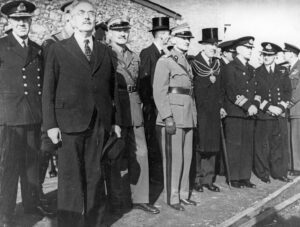
In exile, Marian Kukiel focused his efforts on the organisation of local scientific life and – above all – on research work. He was a co-founder of the General Sikorski Historical Institute (now the Polish Institute and General Sikorski Museum) in London, established in 1945. He also lectured at the Polish University Abroad established in 1949 on the initiative of Oskar Halecki. He also organised the Polish Historical Society in Great Britain, established in 1946, and transformed it into the Polish Historical Society Abroad seven years later. He served as President of this society from its inception until his death in 1973.
During the 28 years of his life in exile, he published many important works. It was then that he returned to the project of writing a biography of Prince Adam Czartoryski, which he had already undertaken when he was the head of the Princes Czartoryski Museum. In 1950, the Literary Institute in Paris published his essay ‘Książę Adam’, about which Jerzy Skowronek wrote with admiration in 1993 as follows: ‘Despite the passage of years, nothing of its beauty or splendour is lost in this tiny booklet, written by one of the most eminent historians, and of military history in particular.’ A few years later, he published the extensive dissertation entitled Czartoryski and European Unity 1770–1861, the translation of which was published in Poland in 2008. In connection with his teaching work at the Polish University Abroad, he prepared three volumes of a textbook on Poland’s post-partition history. The entirety collected in a single volume was published in 1961.
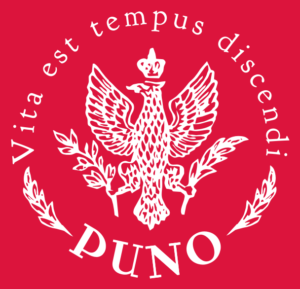
At the same time, he worked on the history of 19th-century Europe. Initially, the subsequent parts were published as academic textbooks, which, after being consolidated, were published in one volume almost twenty years after the author’s death, in 1992. The last major work by Marian Kukiel, incidentally different in many respects from the historian’s other academic works, was the biography of his long-time friend, General Władysław Sikorski. Moreover, over the almost thirty-year period of his life abroad, he published a number of studies in émigré periodicals, mainly in Teki Historyczne. The date of his death is symbolic: the general and historian died in Mabledon on 15 August 1973, Polish Army Day, the anniversary of the Battle of Warsaw. He was buried at the Kensal Green cemetery in London, where he rests next to his wife Stanisława.
The name of Marian Kukiel is permanently inscribed in the traditions of Polish historiography. Rediscovered by successive generations of historians, he can be a model of a reliable and honest researcher. For a wider circle of readers, Marian Kukiel’s writing legacy remains a high-quality source of knowledge about the history of Polish and European arms.
Author: Tomasz Siewierski
Translation: Alicja Rose & Jessica Sirotin

